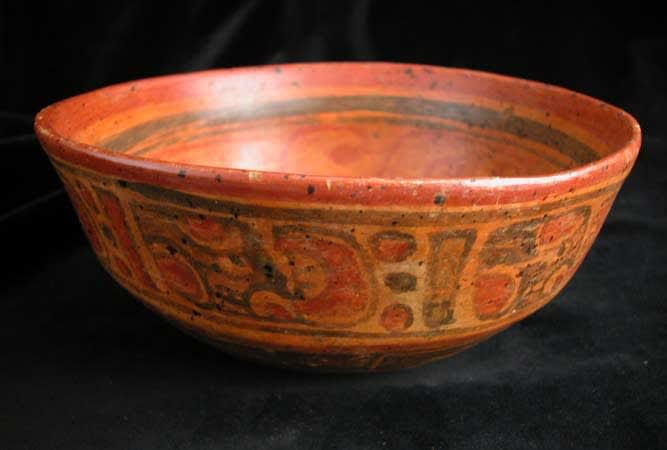Copador Style Mayan Polychrome Bowl, 300 CE - 900 CE
Terracotta
8 x 3.625
PF.5663
Further images
A series of swirling wave glyphs is painted on the interior of this vessel. Various red and black rings frame this band. The wave glyph is attached to another one...
A series of swirling wave glyphs is painted on the interior of this vessel. Various red and black rings frame this band. The wave glyph is attached to another one that appears to be the same shape as the letter “E.” The exterior of this vessel has been divided into two sections. One, the upper flat, vertical rim decorated by a series of glyphs. This glyph appears to be a face with a long, curving appendage in the front. Although it might look more like an elephant to us, this figure probably symbolizes the hook-nosed serpent god. A black and orange, tiered, geometric pattern that terminates in a spiral adorns the lower, sloping portion of the bowl. What was the purpose of this bowl and how does the iconography relate to it? Most probably, it was utilized during ceremonial rituals, perhaps for the consumption of a Mayan concoction made from cacao and chilies. Discovered inside of a tomb, buried alongside a fallen ruler or dignitary, this vessel was as essential in the afterlife as it was in this world.





